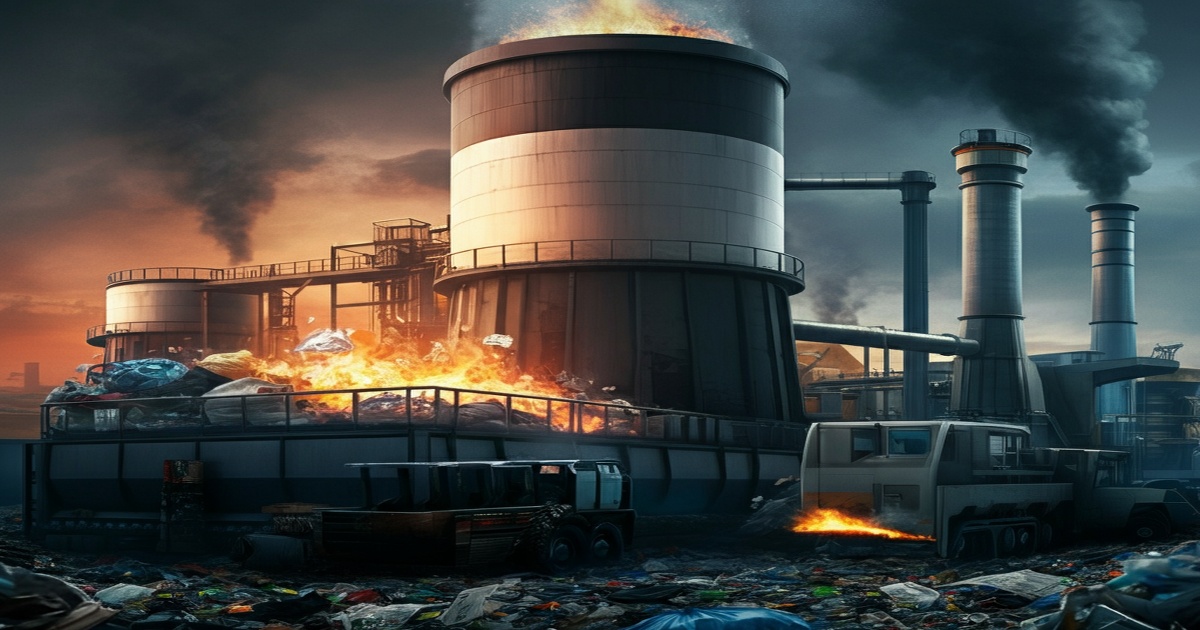As the sun rises, garbage trucks begin their daily rounds, delivering waste to a waste-to-energy plant in Chongqing. This facility receives approximately 300 truckloads of trash each day, which is then incinerated to generate electricity.
This waste-to-energy plant is a key component of Chongqing's initiative to become a "zero-waste city." The city is focused on converting waste into energy through advanced technology, providing clean electricity to its residents, and reducing carbon emissions.
Previously, Chongqing relied heavily on landfills for waste disposal, which presented risks to the environment. Now, all domestic solid waste is processed in an effective and environmentally friendly manner, maximizing resource utilization. The plant, operated by Chongqing Sanfeng Baiguoyuan Environmental Energy, is equipped with multiple waste incinerators and steam turbine generators.
The plant processes a significant amount of waste daily, accounting for a substantial portion of downtown Chongqing's solid waste. This process generates a considerable amount of electricity, enough to power a large number of households. Since its establishment, the facility has significantly reduced carbon emissions.
The waste undergoes a fermentation period before incineration. The resulting leachate is treated and can be repurposed for watering plants or cleaning roads. The fermented waste is then incinerated at high temperatures to minimize the production of harmful gases. The heat generated from incineration is used to heat water, creating steam that drives turbines to generate electricity.
After incineration, exhaust gases are purified to remove pollutants. The remaining ash is recycled for various purposes, including the recovery of valuable metals and the production of construction materials.
To address the challenges of waste incineration, the company has implemented an intelligent incineration system. This system, based on technology imported from Germany, uses a control system to adjust wind supply based on the composition of the waste, improving incineration stability.
Chongqing's waste management system has achieved zero landfilling in recent years. The government supports the waste-to-energy operations by purchasing all the electricity produced and providing additional subsidies, ensuring their competitiveness and sustainable development.
In 2019, Chongqing was selected as a pilot city for zero-waste development. The municipal government has adopted a comprehensive approach to building a zero-waste city, including institutional innovation, technological advancements, and public engagement. By 2027, Chongqing aims to maintain zero landfilling for domestic solid waste, achieve a high utilization rate for industrial solid waste, and continue reducing the amount of hazardous waste sent to landfills.







5 Comments
Mariposa
Waste-to-energy is better than landfilling, but is it the best solution? What about more sustainable alternatives like composting or source segregation?
Ongania
While the text is about what the city is trying to do, where are the specifics of how each step will be executed? This is critical.
Manolo Noriega
Recycling ash for 'construction materials' screams potential contamination. What are the standards for this ash and how are materials tested?
Fuerza
This is a positive change from using landfills. The world needs more of this!
Ongania
The text glosses over potential worker safety concerns. Are employees protected from hazardous materials and by-products?